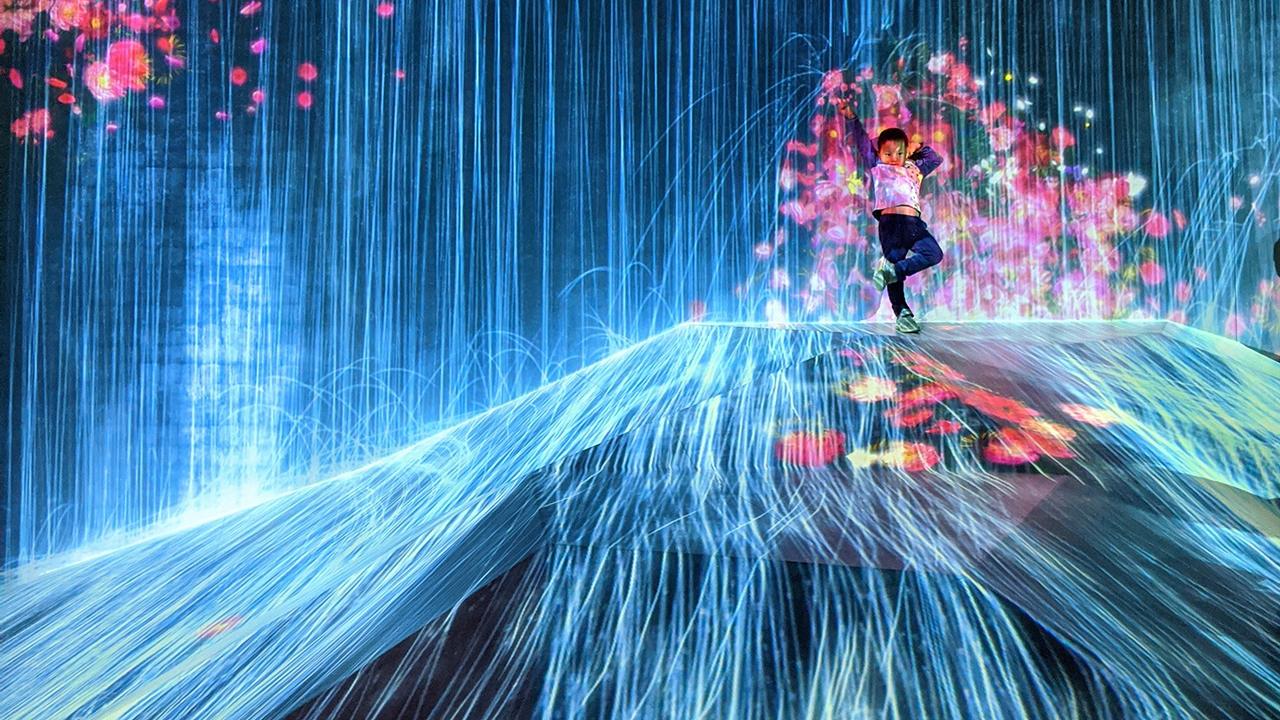How do you picture the good life?
Is it kicking back on a sun lounger with a piña colada? 11am lie-ins for the rest of your days? Or, as one member of our Campfire suggested, simply relaxing with a “glass of wine, some good saucisson, and a bunch of friends”?
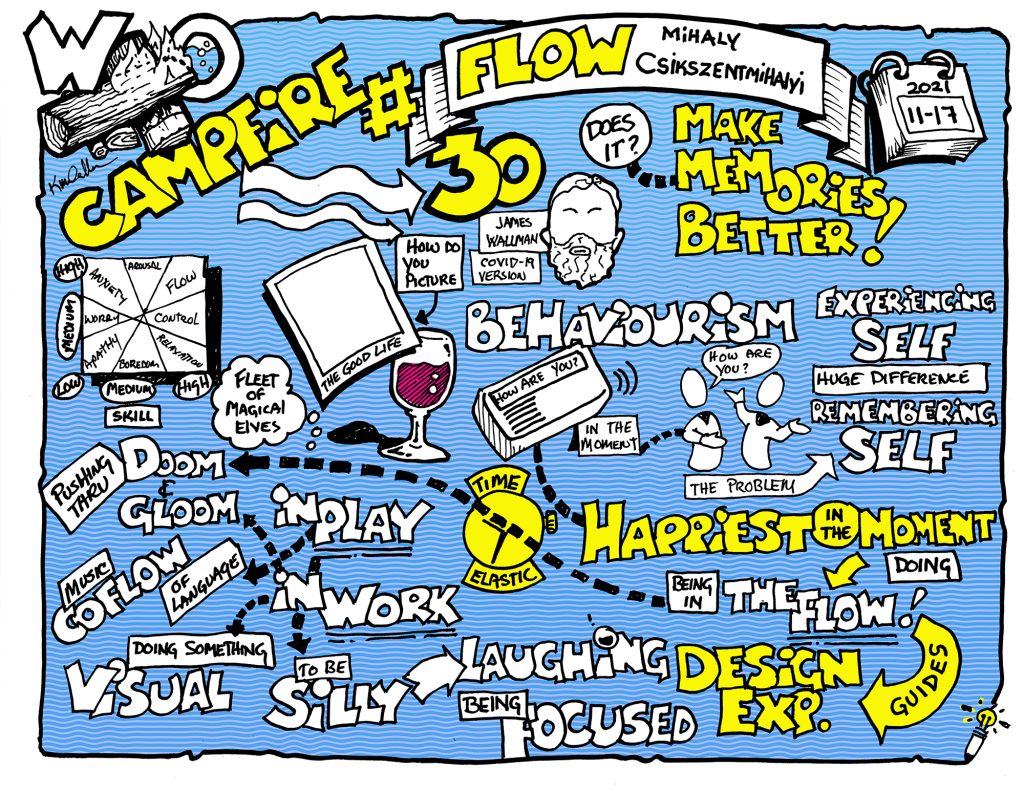
Our fantasies of the good life tend to revolve around free time, when our work is done and our to-do list ticked off. However…
“Leisure… does not improve the quality of life unless one knows how to use it effectively, and it is by no means something one learns automatically.”
Mihalyi Csikszentmihalyi, “The Father of Flow”
This radical, fascinating insight comes from Mihalyi Csikszentmihalyi, a pioneer, leader and legend in the psychology of happiness through optimal experiences. Csikszentmihalyi understood that free time is more difficult to enjoy than work, and that it takes real skill to design how we use our time. Key to this is the state he called “flow”, when we are fully engaged in the present moment.
So in honour of Csikszentmihalyi, who passed away in October 2021 at the age of 87, we wanted to delve deeper into flow – and Csikszentmihalyi’s eight steps into it – to discover how we might use it to design more engaging experiences.

Our Campfire, featuring a few new faces from the likes of Whole Foods and Catalyst Arts as well as our Founding Members, came from all corners of the world to pay tribute to the “Father of Flow” and share the tricks and techniques they use to design for it. From game-show-ification to LARPing for non-LARPers, here’s what we learned…
A Brief History Of Flow
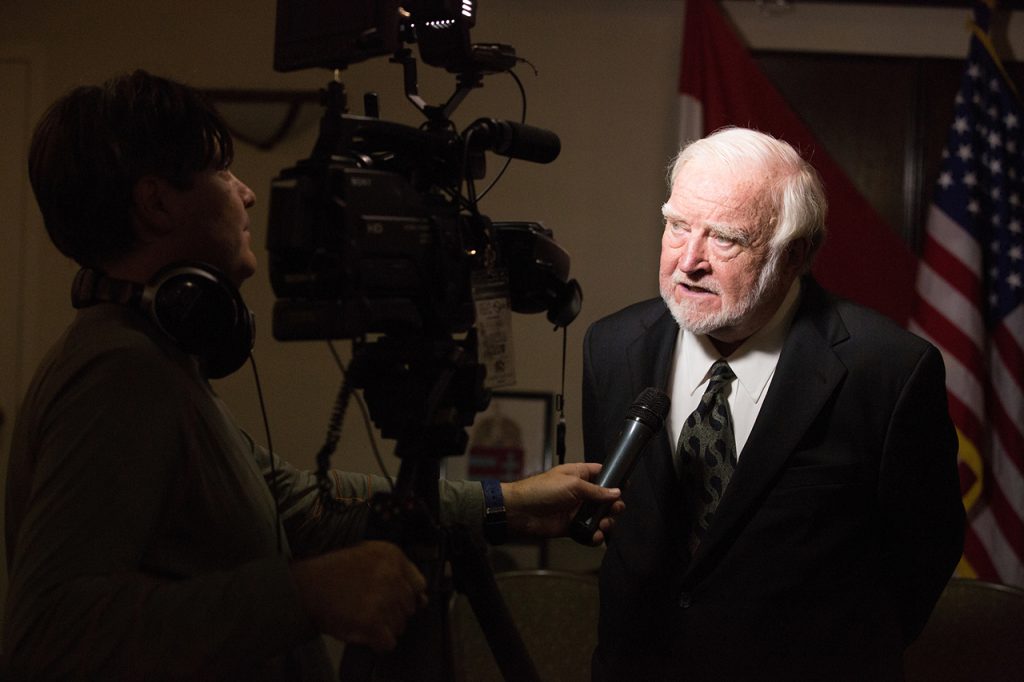
Mihalyi Csikszentmihalyi was born in 1934 in Croatia, and later became a prisoner of war in Italy. While in the camp, he was interested in why some people were unable to cope with the experience, whereas others – like him – were able to stay calm.
After the war, Csikszentmihalyi moved to the USA, studied psychology and later became a professor at the University of Chicago. He became frustrated at the rise of behaviourism, which turned psychology into an observable data science. Instead, he felt that:
“Life unfolds as a chain of subjective experiences… The quality of these experiences determines whether and to what extent life was worth living.”
Mihalyi Csikszentmihalyi, “The Father of Flow”
Previously, experiences had been measured by the “day reconstruction method” – i.e. asking people how their day had been after the fact. However, this method failed to recognise the massive gap between the “experiencing self” and the “remembering self”.
Csikszentmihalyi introduced the idea of beepers, where people were beeped at a certain time and asked to record their emotions (the origins of the method that Mackerron and Mourata would use for their Mappiness app decades later).
Through his beep test, Csikszentmihalyi found that when people thought they might be happiest – usually sitting around – they actually weren’t. Instead, it was when they were doing something challenging, or were in “flow”, that they recorded feeling the most satisfied.
In his book FLOW, Csikszentmihalyi identified eight key qualities that define flow (for a more detailed breakdown, read Beep Beep! The Radical Research That Led To The Discovery Of Flow).
- “The best moments in our lives are not the passive, receptive, relaxing times… The best moments usually occur if a person’s body or mind is stretched to its limits in a voluntary effort to accomplish something difficult and worthwhile.”
- “Full body awareness”: both your mind and body are not only entirely focused, but also completely in sync with each other, with no spare psychic energy that could be caught by a passing distraction.
- Clear goals.
- Feedback.
- The sort of immersive experience that leaves you so focused you can’t think about anything but this moment and this place, right here, right now.
- Paradox of control: “what people enjoy is not being in control, but the sense of exercising control in difficult situations.”
- Lose yourself: while your mind and body is entirely present, at the same time you lose a sense of self.
- Time has a strange, elastic quality. A moment can stretch into what seems like minutes. Or time flies by as you’re caught in a reverie.
The Difference Between Flow And Immersion
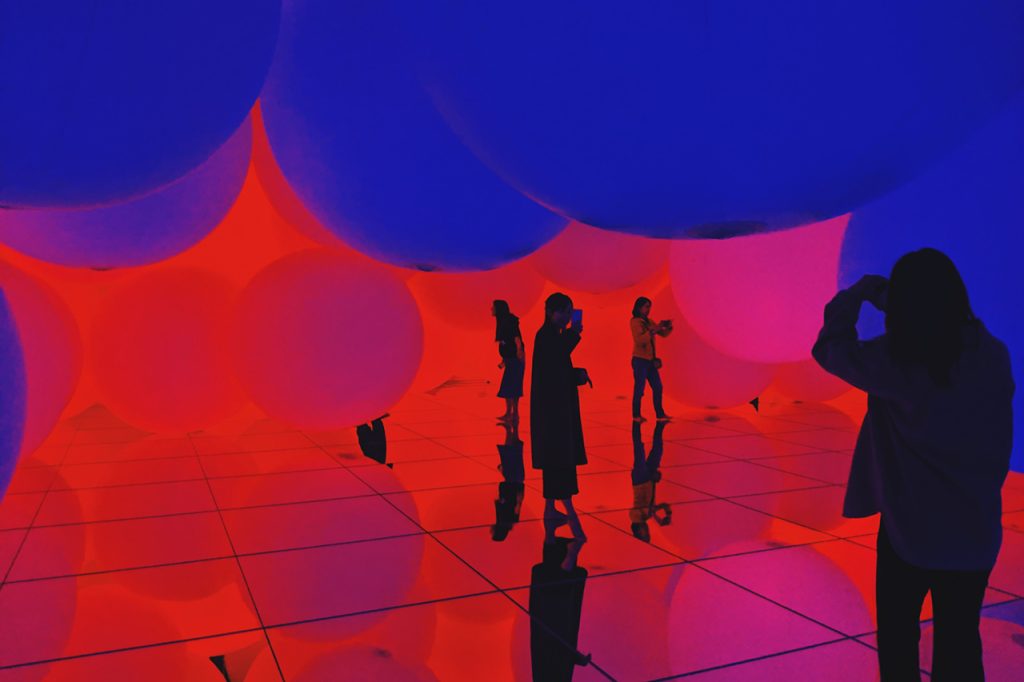
In Campfire 20: The Immersive Firestarter and Campfire 20: The Sparks, we looked at some of the ways in which we define immersion. And while immersion and flow might overlap and share some of the same characteristics – audience participation, or the sensation of being surrounded by a new reality, for example – there’s some debate as to whether they’re the same thing.
In Campfire 20, experience design professor Ben Hunnicutt said:
“Engagement is another word for immersion. And one of the empirical discoveries about human happiness is engagement, or immersion, or flow. Csikszentmihalyi talks about flow or diversion as one of the elements of human happiness.”
Ben Hunnicutt, experience design professor
However according to experience design professor Patti Freeman, immersion is just one type of flow – the others being engagement and absorption. Engagement is about following a story, absorption could be savouring a great bottle of wine, and immersion is perhaps closer to the full-body experience Csikszentmihalyi describes.
Freeman also makes the distinction between flow and “micro flow”.
“Flow, or “big-F flow” was conceived by Csikszentmihalyi and others to be highly unusual experiences, whereas micro-flow is more common and can happen daily.”
Patti Freeman, experience design professor
Perhaps the distinction between flow and immersion comes down to the kind of experience you’re designing. Audio experience designer Charlotte-Amélie Veaux wondered if we should think about which we want to create as a first step in the process.
“When you leave an immersive experience, you can be in flow, and when you’re in flow, you have a feeling of immersion. However, you can also have immersive experiences that don’t have that. So it depends on what you want to do. Do you want people to be in flow, or do you want them to be immersed?
In our Tree of Life audio experience, we want people to be immersed, but we don’t care if they’re in flow. It’s active, but it’s not at all challenging. If you want to have a learning experience, flow might be most appropriate.”
Charlotte-Amélie Veaux
Csikszentmihalyi’s eight key components of flow give us some parameters to measure whether we’ve achieved it. Event designer Kelly Vaught asked if it was always necessary to try and meet these when designing an experience.
“It could just be a matter of semantics. We sometimes have a tendency to overthink and try and achieve when it may not be appropriate. We may not need to create flow or want our guests to experience it. It may not always be appropriate or necessary, depending on what you want to do.”
Kelly Vaught, event designer
However, should we respect these parameters or push against them?
“Maybe we don’t always need to create flow. But just because that’s not the focus, maybe we should still aim for it to see what the outcome might be.”
James Wallman, CEO, The WXO
Seven Ways To Design For Flow
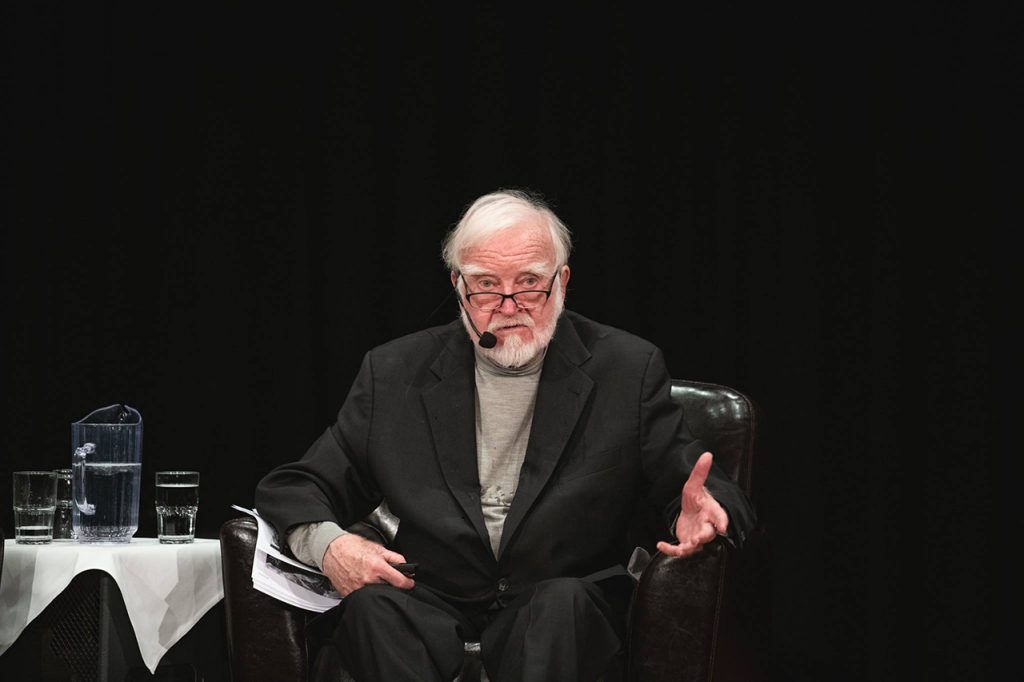
Having established Csikszentmihalyi’s eight gateways into flow and what separates and connects it to immersion, we asked our Campfire to think about how they might – or already do! – design for flow in their experiences.
1. Set Challenges For Your Audience
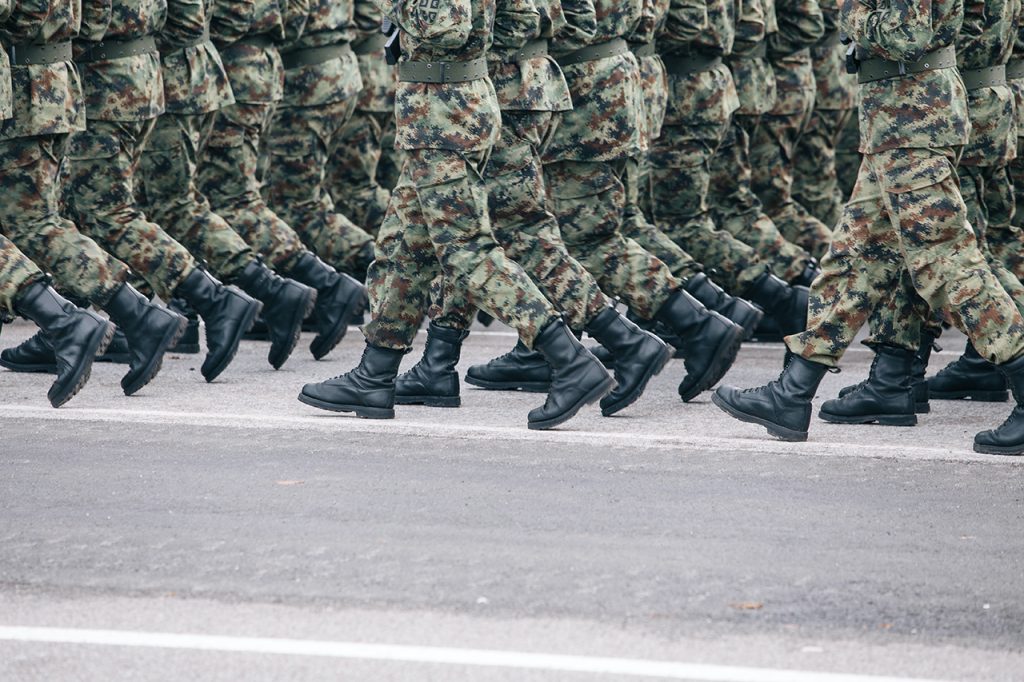
Inspired by step one on Csikszentmihalyi’s list – the “effort to accomplish something difficult and worthwhile” – our Campfire agreed that it was important to create obstacles for your audience to overcome (see Campfire 29: The Universal Ingredients Of Story for more on how learning to overcome obstacles appeals to human nature).
“From my current research with colleagues at Texas A&M, experience providers need to do the following in order to bring about micro-flow or enjoyment: level up the challenge to match skills and to activate intrinsic motivation. Create clear goals. And require mental action.”
Patti Freeman, experience design professor
Event producer Tahira Endean gave the example of a hardcore Navy Seal boot camp experience being much more memorable than a yoga session. Vieux talked about how the extraordinary violence of an Israeli dance production pulled her into a state of flow where time ceased to matter. And creative director Steve Tiseo mentioned the “fun stress” of pulling together a complex gala event that turned “doom and gloom” into “calm”.
This might feel counterintuitive, particularly in the corporate world.
“I’m always trying to get people to be a little bit more courageous. I come from the underground events world where it’s very edgy and alive, and a very vibrant culture is emerging in the moment. Whereas corporate events are very scripted and formal.”
Audette Sophia, Chief Experience Officer, Catalyst Arts Entertainment
However, there’s a limit to how much of a challenge you want to set. As we covered in Campfire 29, a little bit of distress or conflict can be a good thing. But as experience design professor Bob Rossman explained, to get people in “the flow channel” we need to find the right balancing point between anxiety and boredom.
“Sometimes we dumb things down or we overwhelm people. Csikszentmihalyi’s first book was called Beyond Boredom and Anxiety, and the “flow channel” meant making sure that you kept people from getting bored, but you also didn’t give them so much that they became anxiety-ridden.”
Bob Rossman, experience design professor
2. Turn Non-LARPers Into LARPers

One part of the Experience Economy that seems particularly well suited to the concept of flow is that of LARPing (live action role-playing).
“When we were LARPing, we were experiencing flow before we knew it was called flow! Because when you act as a character, you are the character. And that’s something incredible about LARPers, in that they don’t need a lot of things to feel that. They just put on their costume and feel flow by acting their character.”
Maël Magat, immersive experiences creator
When his company evolved from LARPing to more hybrid experiences, immersive creator Maël Magat wanted to figure out how to push people into behaving the same way as LARPers without a knowledge of that background. He and his team came up with the following tools:
- Pressure, like in an escape room game.
- Fear, like in the Parisian thriller game The Live Thriller, where you’re too busy running for your life to focus on anything outside the experience.
- Progression, where you slowly introduce people to their character and narrative step by step.
“First we explain to them who they are. Then we challenge them a little bit by asking them to create elements of their own character – for example, you’re secret service agents, but what are your code names? So they take what we give them and personalise it. Then we launch them into a situation where they have to act, so the pressure starts. And in this situation they’re completely free.”
Maël Magat, immersive experiences creator
This reminds us of Annette Mees, Head of Audience Labs at The Royal Opera House, and her comments in Campfire 12: Taking The Stairs Versus Crossing The Threshold:
“I never use the word threshold, because it implies a single step. Instead I think of stairs. What are the tiny steps towards immersion? Because one thing doesn’t shift how you feel. I always think about the journey there – the fact that you’re a bit stressed at work, or you have to buy milk on the way home. You need a multitude of small steps to give people the chance to leave all that behind and immerse themselves in the experience.”
Annette Mees, Head of Audience Labs, The Royal Opera House
All three of Magat’s tools also remind us of our recent Experience Review of Swamp Motel’s The Drop – read the full review here.
3. Unleash The Inner Child
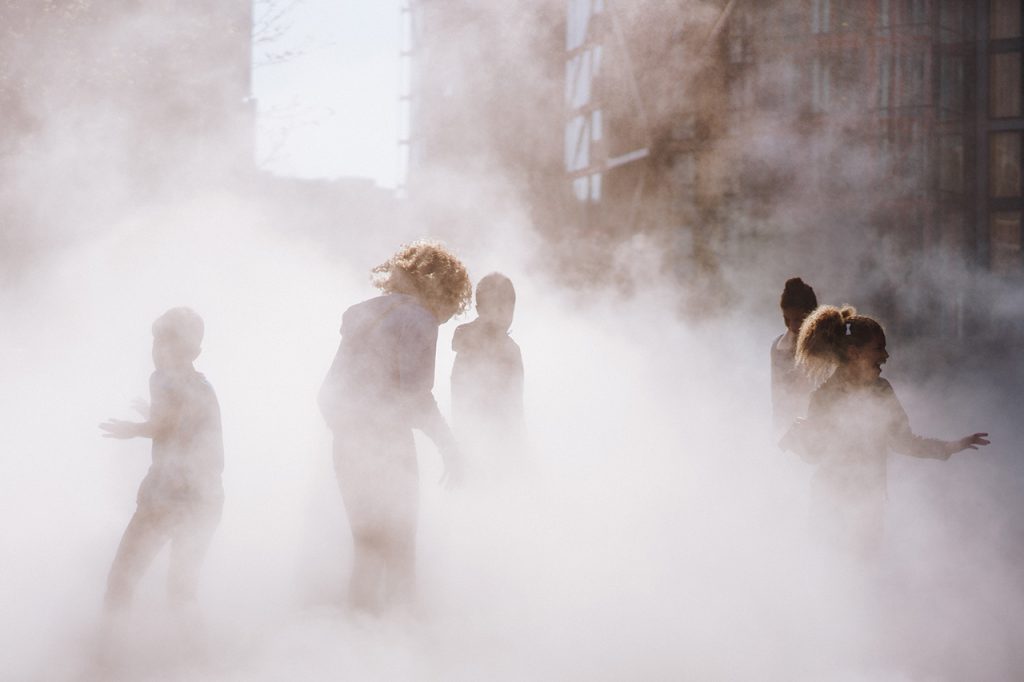
Another theme that emerged was the idea of disarming our adult, corporate selves by introducing a sense of play and silliness. Tiseo talked about using Microsoft Kinect to enliven a medical trade show:
“We made this whole Kinect experience asking these stuffy doctors to dance and move around and do weird stuff with their bodies. We got our brand ambassadors on the booth to play non-stop when no-one else was there and really have a good time doing it.
Once you get the first doctor to take his suit jacket off, then his colleagues start and it becomes competitive. Then you have six people laughing and then everyone starts seeing what’s going on. It lets people break out of their shells. The minute you give people permission to be silly or playful, everyone starts having a better time.”
Steve Tiseo, creative director, Friendly Vengeance
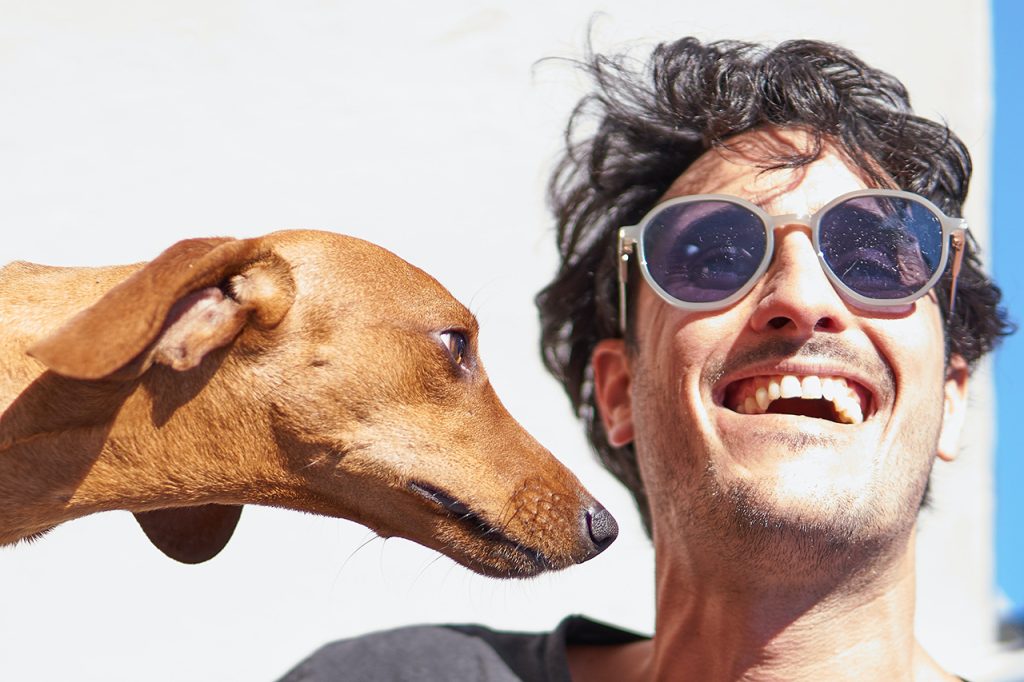
Veaux agreed that silly is good, and pointed out that putting a dog in the room immediately melts people’s social barriers. Sophia remembered a similar experience at a Hendricks Gin event:
“Have something disarming or cute – something that makes you feel like a kid for a moment and gets everyone out of their heads. I was once at a Hendricks Gin party, and I turned around and there’s a bear and a bald eagle with a huge head dancing. It made me giggle and stop taking myself seriously – there’s a sense of permission when there’s something silly or playful or cute.”
Audette Sophia, Chief Experience Officer, Catalyst Arts Entertainment
In other words, find a way to reach the inner child and get past the social mask. As Whole Foods’ Damien Corcoran said:
“I think it needs to invoke the inner child to allow you to drop your armor, drop that adult professional facade that you maybe feel like you have to carry with you.”
Damien Corcoran, VP, Whole Foods
4. Set Up Opportunities For Cooperation
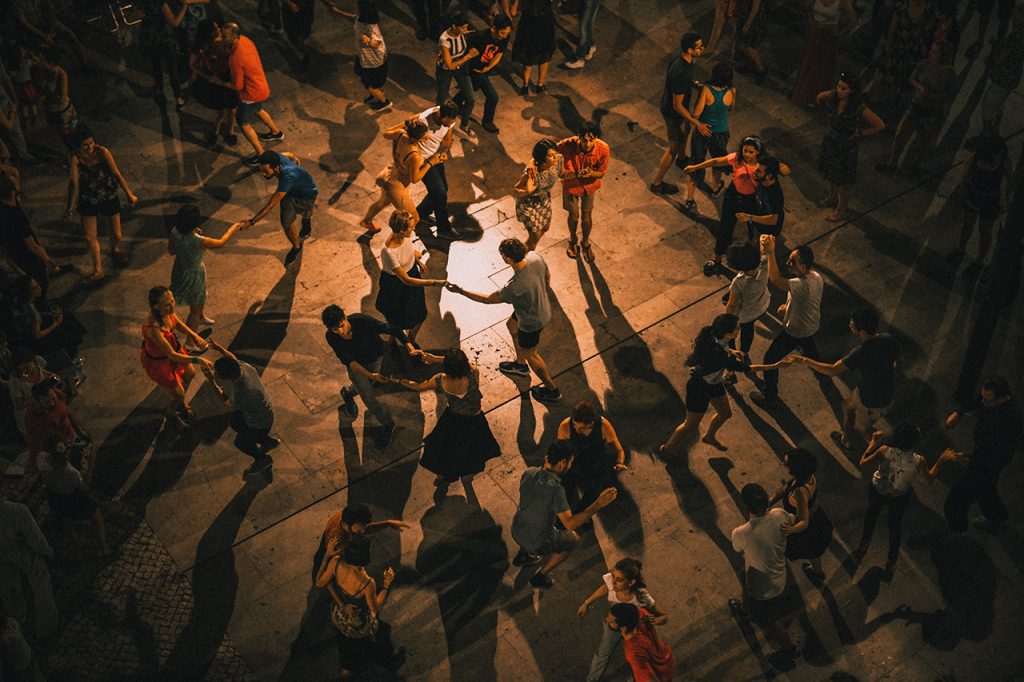
As in Tiseo’s Kinect example, allowing audiences to feel a sense of cooperation is an important part of getting into flow (and again links back to the universal ingredients of story in Campfire 29).
WXO CEO James Wallman calls this “co-active flow”, giving the example of watching The Rolling Stones play to a crowd of 100,000 people where “they play the crowd as much as the instruments”.
“When I play music with a group of individuals. I find there are times when time is meaningless. Focus is there. I enter a palpable vibration. I feel like it embraces me.”
Kelly Vaught, event designer, BeCore
Writer Cynthia Vergon experienced a similar sense of flow working with a translator.
“We got together into this incredible flow where we were dancing around each other’s speaking. We had never met before this training session and it was so interesting to have that interactive flow with that other person that I didn’t even know. We were just perfect, in harmony.”
Cynthia Vergon, writer
As Veaux explained, this sense of “collective agency” creates a different experience to when we’re alone – think coworking versus working from home, or going to a dance class versus watching a yoga video on YouTube.
Perhaps our affinity for cooperation holds even when we’re watching someone else do something, even if we’re not doing it ourselves. Sophia brought up the interesting parallel of game shows:
“A game show is a format that is interactive. When a person gets called up or brought on stage, what that’s doing psychologically is giving everybody a proxy. And then whatever happens to that person, people almost feel like it’s happening to them. That’s designed intentionally into street performers, magic shows and improv theatre – they all make you lean forward in your seat much more than the scripted show, because it’s alive. It’s happening in the moment.”
Audette Sophia, Chief Experience Officer, Catalyst Arts Entertainment
As we said in Campfire 20: The Sparks, “we’re all improv actors now”.
5. Play With The Senses
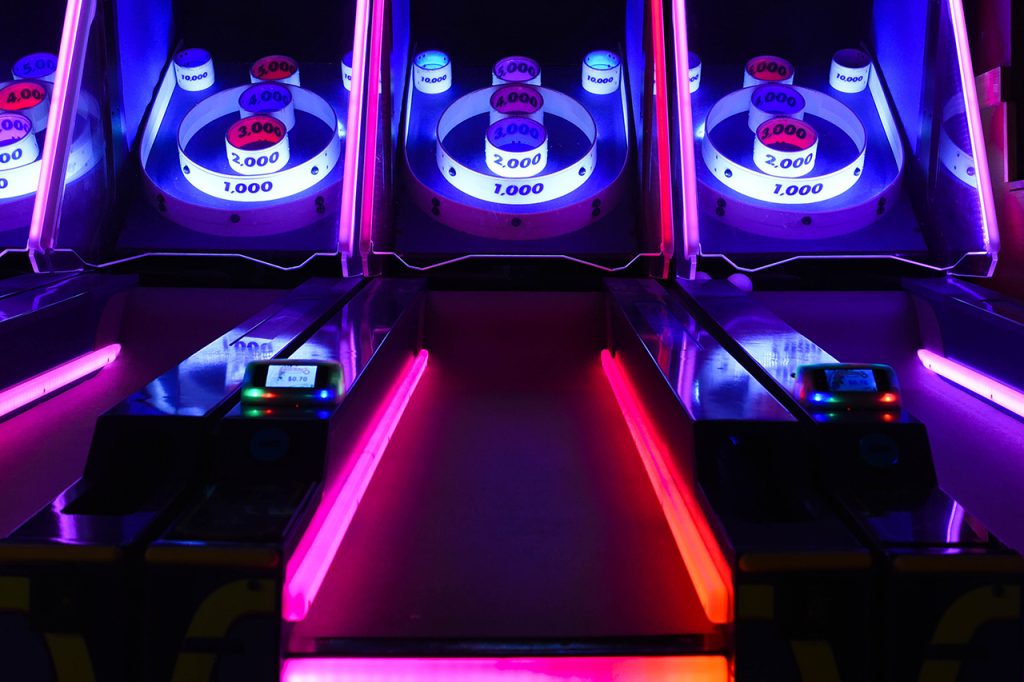
This ‘game-show-ification’ of experiences also links to another recurrent theme: that of sensory stimulation and/or deprivation.
“I just pitched a game show to a client where I wanted to turn the end of the show into the peak experience. Let’s lift up the winners, let’s have confetti and music and throw money at them! Let’s really blow it up and make that the moment that everyone remembers. Creating a container in a space where something unexpected can happen is key to breaking out of the monotony. And people get extra present when they don’t quite know what’s happening.”
Audette Sophia, Chief Experience Officer, Catalyst Arts Entertainment
(For more on elevating endings and playing with peaks, check out Campfire 1: We Began With Endineering and Campfire 25: Beyond The Peak-End Rule.)
To make people feel fully present in the moment, you can use sensorial design to evoke memories and pull them into the story, through smell, taste, sound, sight and touch. However, you can also eliminate senses and distractions that might pull people out of flow – physically separating spaces within festivals, for example, or as Lina Edris suggested:
“Break barriers of time and space literally and physically – using a dark room provides the illusion of infinite. No specific duration is given to the audience, they can remain for as long as they want, ensuring nothing ends their experience of flow.”
Lina Edris, creative director
This also introduces an element of vulnerability that can make the flow experience more intense. Talking about her Tree of Life experience, Veaux said:
“We ask you to close their eyes so that you’re deprived of one of your senses. Put you with people that you don’t know and use neural sound technology that most people are not aware of and have never tried. It’s the first time and it’s really out of their comfort zone. It’s an experience that creates intimacy and in which you are in a position of vulnerability.”
Charlotte-Amélie Veaux, audio experience creator
This also reminds us of the Transformational Travel Council’s Jake Haupert’s idea of blindfolding travellers back in Campfires 16 & 17: Experience Design Will Elevate Your Next Vacation, based on the idea that when you remove one sense, it heightens the others and helps people get into a flow state – what Haupert calls “the in-between letting go and letting flow”.
6. Get Feedback From The Experiencing Self
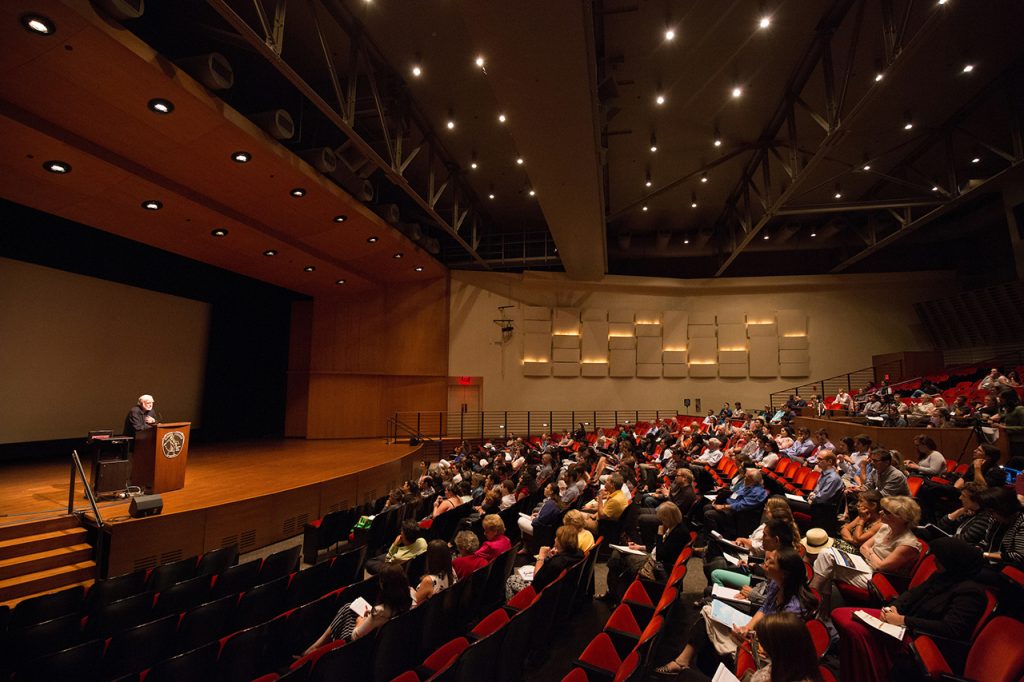
Referencing point 4 from Csikszentmihalyi’s list, lighting designer Koert Vermeulen was interested in finding a way to get live feedback from passive audiences.
“I think because we do a lot of stuff for live audiences, which are mostly passive or sitting down, we talked about the feedback that we get. We’re working on a system to get feedback directly from your audience while you’re doing your show. And because typically people will lie when you do a survey at the end, we want to see if they are suprised when we want them to be surprised, or happy when we want them to be happy. I think that feedback loop is going to help us a lot as a tool to make this show better.”
Koert Vermeulen, lighting designer
(For more on how to measure immersion in the moment, check out Campfire 9: Measuring The Value Of Experiences with neuroscientist Paul Zak.)
7. Prioritise Active Over Passive Experiences
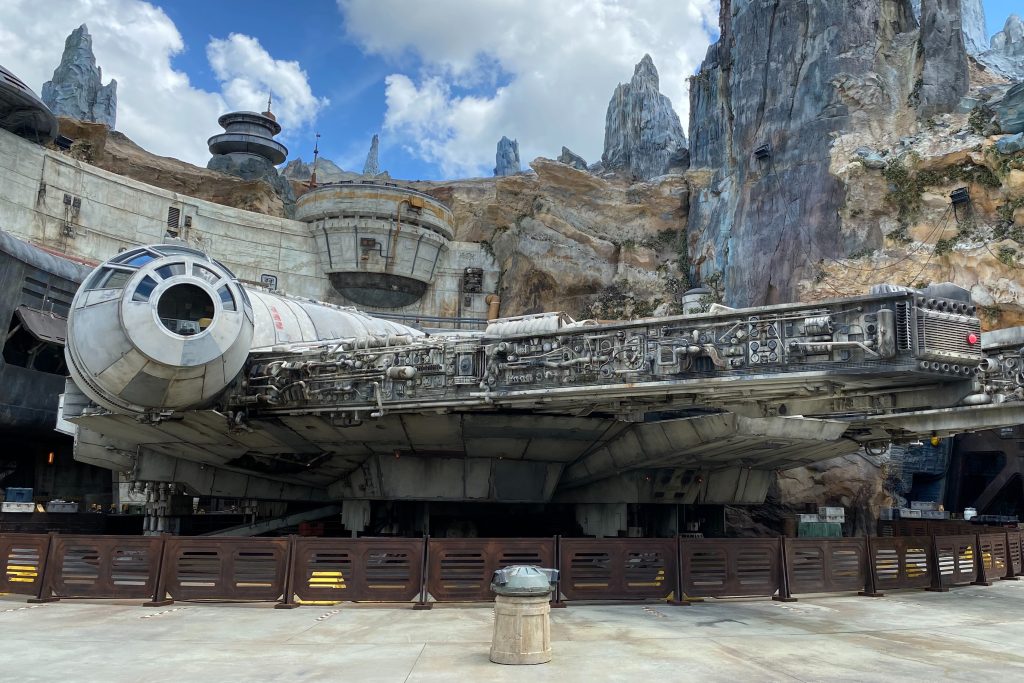
If according to Csikszentmihaly “the best moments in our lives are not the passive, receptive, relaxing times”, then the best experiences of our lives will not be passive experiences. Rossman was adamant that this is the central component of flow.
“The whole notion of flow is that people do it. And so this notion that you’re going to do it to or for them isn’t flow. When I go to places and they call up a volunteer, I get pissed off if I’m not picked. I don’t consider them my proxy. I came to do something and I expect to be able to do it. And so if you look at flow, there’s a person in that flow channel, and they’re getting to act and control whether they are in anxiety or boredom.
This is a much more difficult design process because you’re giving up control and allowing the participant to have control of their destiny. And that’s what the challenge of experience design is. It’s not you doing something; it’s creating an environment where people can do something they’re interested in and something they feel good about themselves for having done.”
Bob Rossman, experience design professor
Wallman wondered if the concept of empathy and cooperation – the way we root for the hero in The Hero’s Journey, for example, or follow the action of a soccer game as if we were playing – meant that flow can exist without participation. Rossman countered that:
“I think that’s entertainment. The problem is you have no agency for controlling the outcome. You’re just watching other people do things. You may be empathetic to them. But when I watch a football game on TV, I get excited and I can get into it, but I can’t do anything to control the outcome. The players are doing that. And so I think we have to charge the players – they’re the ones having all the fun!”
Bob Rossman, experience design professor
Some modern themed experiences are already playing with this idea of nonlinear outcomes, like Star Wars: Rise of the Resistance at Disneyworld.
“Some ride designers are designing nonlinear experiences like those Choose Your Own Adventure books that we used to read when we were kids. Star Wars has done this with their with their brand new ride where you have all of these roles and depending on who you’re with, your experience is going to be different. I think that’s really interesting – to make people who are spectators become actors of the experience.”
Cynthia Vergon, writer
The WXO Take-Out
Csikszentmihalyi’s insight that free time is more difficult to enjoy than work might seem radical, but the more we dive into the concept of flow, the more it makes sense.
The core components of flow – participation, overcoming obstacles, sensory stimulation and deprivation, feedback, cooperation – are ones that we’ve discussed time and again in different Campfires, and that ultimately link back to human nature.
And for experience designers, an understanding of flow – and how best to design for it – is a skill that will help them to create experiences that better use their audience’s time and are truly memorable.
Interested in taking part in discussions about experiences and the Experience Economy? Apply to become a member of the WXO here – to come to Campfires, become a better experience designer, and be listed in the WXO Black Book.

